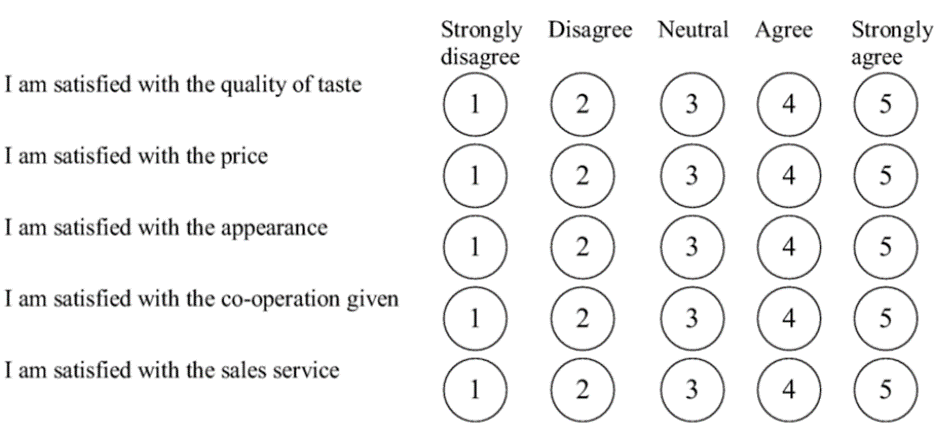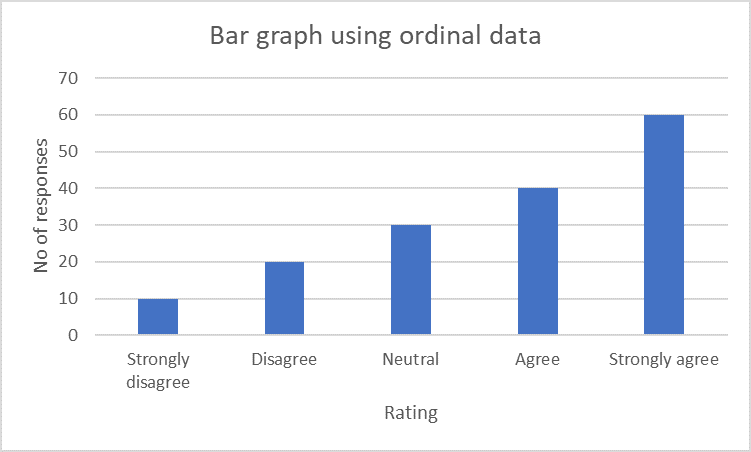A market survey or research is a technique companies use to identify their customer’s needs. It focuses on consumer satisfaction, taste, and opinion of a product or service. This helps a company obtain proper feedback from its clients. Further, they can strategize or create better products and services using data and insights from the survey.
Market surveys use various tools and techniques to provide a detailed report of the market trends. One of the most accessible and practical survey techniques is the Likert Scale.
Let’s explore it in detail and how it is applied in real-world businesses for decision-making.
Likert Scale in Market Research
The Likert scale is used in standard surveys and questionnaire forms. It measures the opinion of the consumers using a set of related questions.
Likert scale-imposed surveys give a detailed analysis of the customer’s rating level, inclination, and other elements. Unlike yes/no questions, this scale uses 5- or 7-point range answers, unveiling the overall response as positive, negative, or neutral.
For instance, companies may use the Likert scale in this way.

This particular rating is a 5-point range answer to evaluate customer satisfaction. It clearly defines the level of agreement, making it a reliable survey ranking.
How to Prepare Effective Likert Scale Questions for Survey Analysis
1. Create unbiased questions
The questions must be designed with a single purpose, like satisfaction, quality, frequency, price, and likelihood. For instance, if you are conducting a survey on Netflix subscriptions, instead of creating bland questions like “Do you like Netflix subscription”? and “Are you satisfied with Netflix subscriptions?”
Create specific questions like “Are you satisfied with the pricing of a Netflix subscription?” This allows customers to give distinct answers with attention.
2. Focus on a single aspect per question
It is vital to focus on dealing with one criterion in a question. Featuring two aspects at a time leads to confusion among the respondents.
For example, do not create questions like “Do you like our women’s and kid’s clothes?” and ask, “Do you like our exclusive kids’ clothes section?”
3. Design easy, readable questions
Crafting questions with commonly known words is necessary as customers answer surveys with little attention. Avoid jargon to gain the attention of the person till the end. You can also do A/B testing of the surveys targeting different audiences.
4. Add open-ended questions
Make sure to add more open-ended survey questions than yes or no questions.
Open-ended questions lead the responders to give detailed information, providing more clarity on the survey. For example, “Is this product useful for you?” is a yes or no question. However, “How do you use this product in your home?” gives unique answers.
How to Effectively Prepare Likert Scale Answers in Survey Analysis
1. Use an odd number responses section
It is best to use an odd number of answer sections to give space for neutral candidates. For example, prepare five potential responses, which include:
- Extremely Satisfied
- Satisfied
- Neither Satisfied nor Dissatisfied
- Dissatisfied
- Very Dissatisfied
You can accurately filter out satisfied and dissatisfied customers using the Likert scale.
2. Calculate the intensity of the answers with a star rating
Surveying can end with a star rating to understand the intensity of the agreement. For example, Google Review uses a star rating feature in the business pages. Take a look at the Taj Hotel, Delhi’s star rating on Google Maps.

People understand that a low rating indicates moderate services, while a high rating is a sign of excellent services.
Data Collection and Interpretation of the Likert Scale
1. Ordinal data analysis
Interpreting the five-point Likert scale involves the rating scale (1 to 5) and the number of responses as indicated below.
| Rating | Given Number | No. of Responses |
| Strongly Disagree | 1 | 10 |
| Disagree | 2 | 20 |
| Neutral | 3 | 30 |
| Agree | 4 | 40 |
| Strongly Agree | 5 | 60 |
This ordinal (non-numeric) data can be directly used to picture a chart or graph.

The graph can also be plotted using different demographics, such as, age and gender.
Further, the chi-square test can plot a graph using only two categories: agree/strongly agree and disagree/strongly disagree.
The result can be given in percentage by finding the mode.
2. Interval data analysis
The Likert scale can be considered as interval data if the answer involves personal attitudes. Thus, mean, median, standard deviations, and correlations can be used to analyze the data. T-tests and ANOVA (Analysis of Variance) are some of the standard techniques used for data analysis.
Conclusion
The Likert scale is a rating system used in surveys to analyze businesses. Designing suitable Likert scale questions and answers leads to more attention and less bias. It allows the responders to give distinctive answers in the crowd. Additionally, it helps visualize valuable insights using bar charts and graphs. A statistics model can break complex numbers into simple forms. Moreover, a good number indicates good service, while the opposite signifies that it’s time to improve business tactics.


